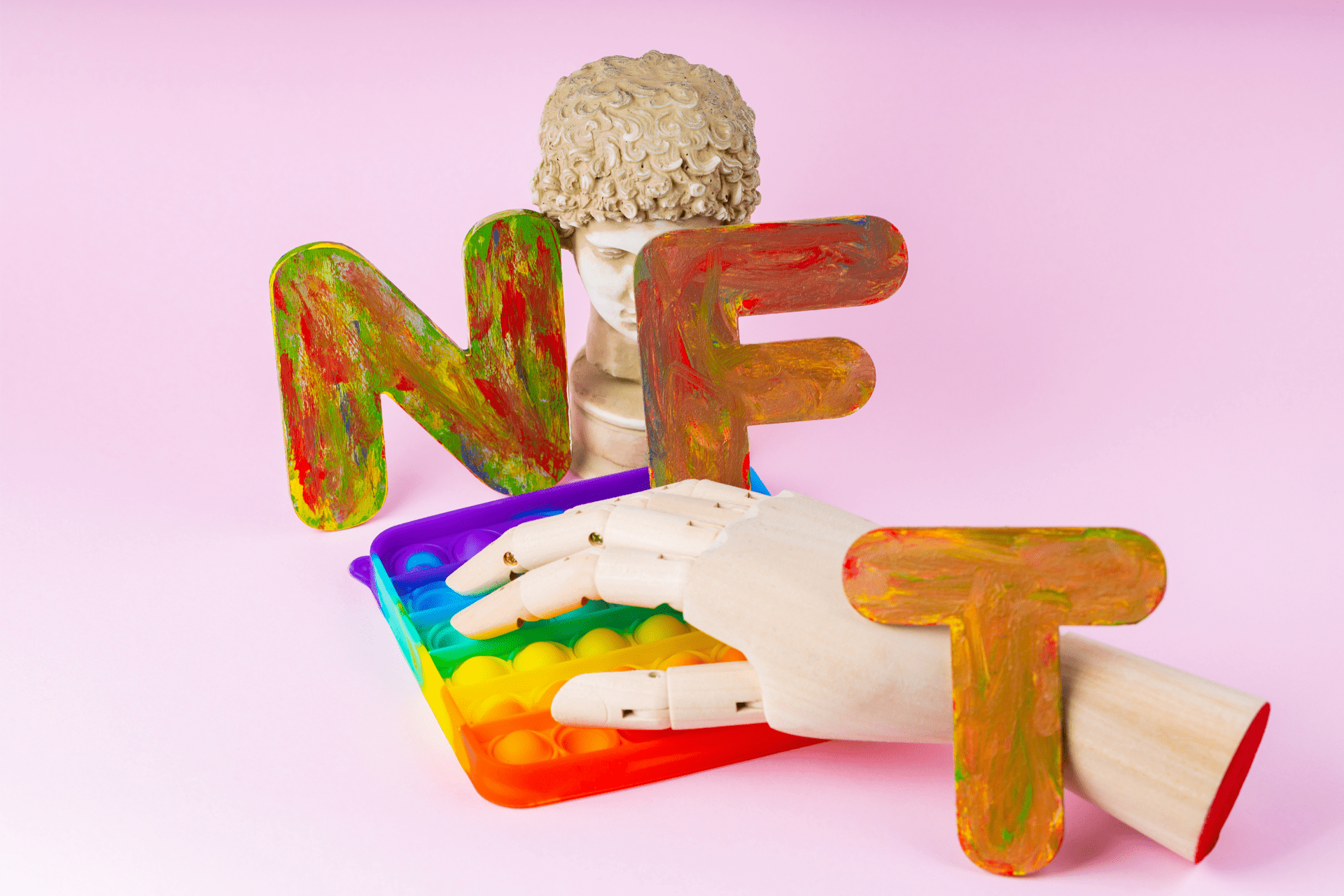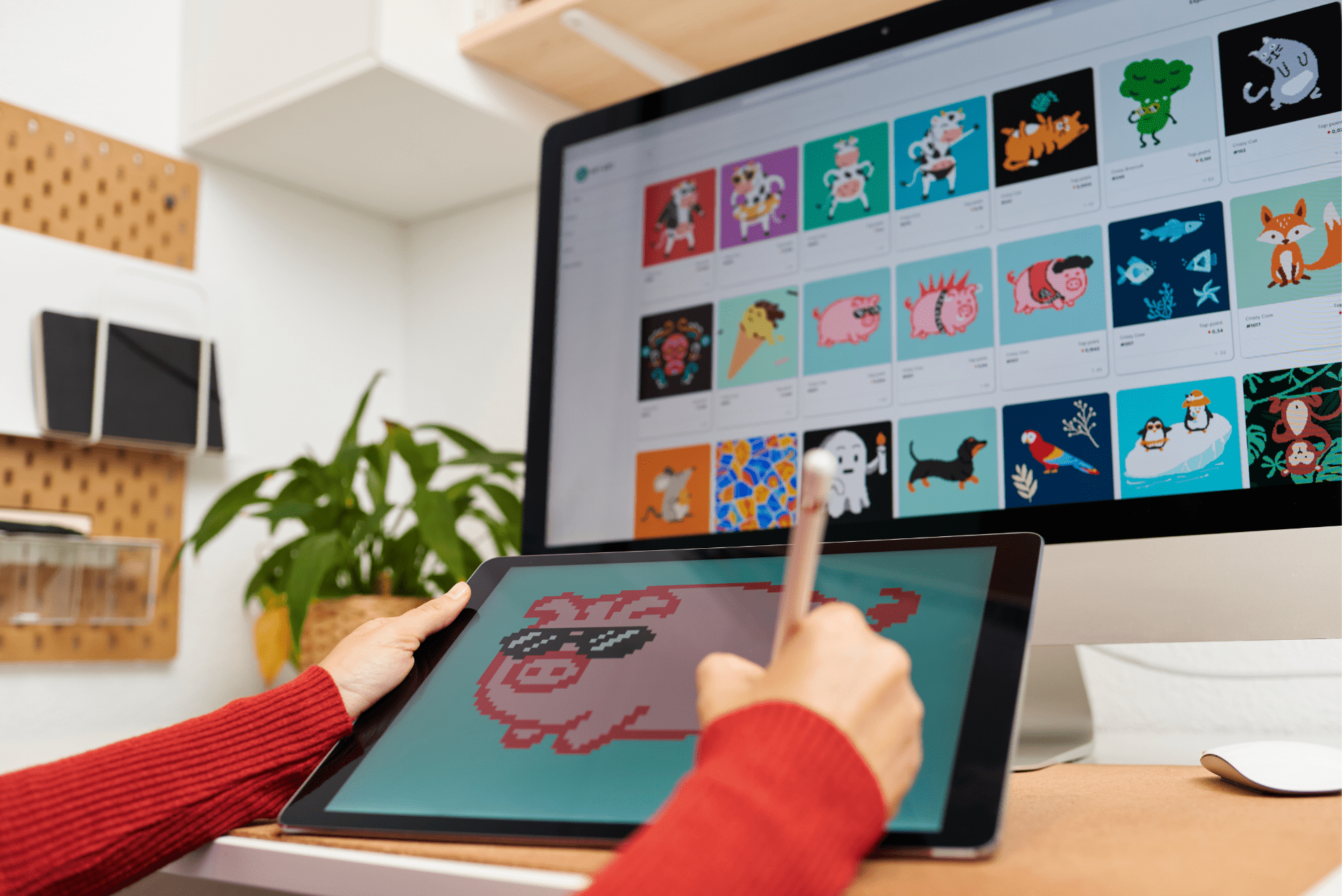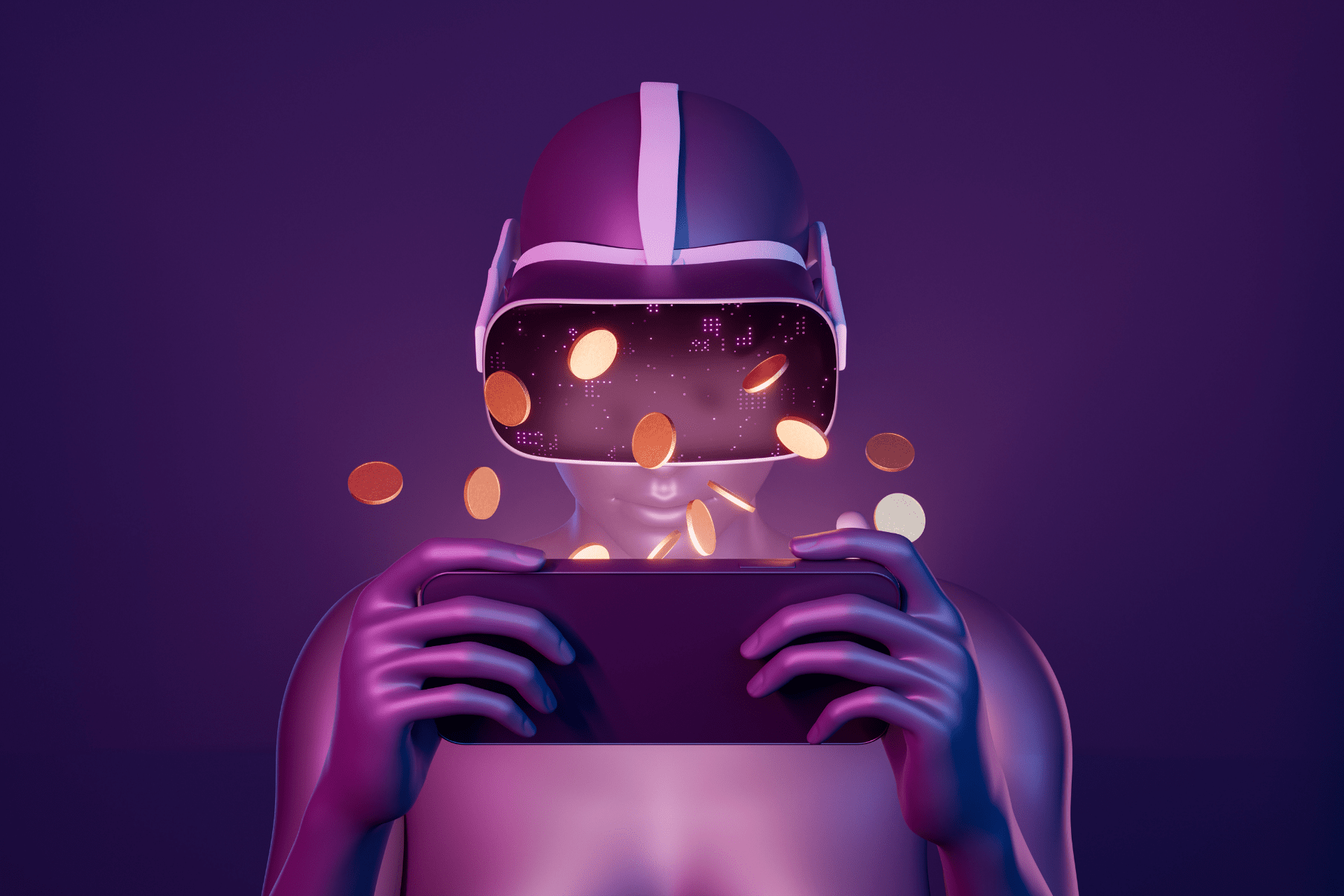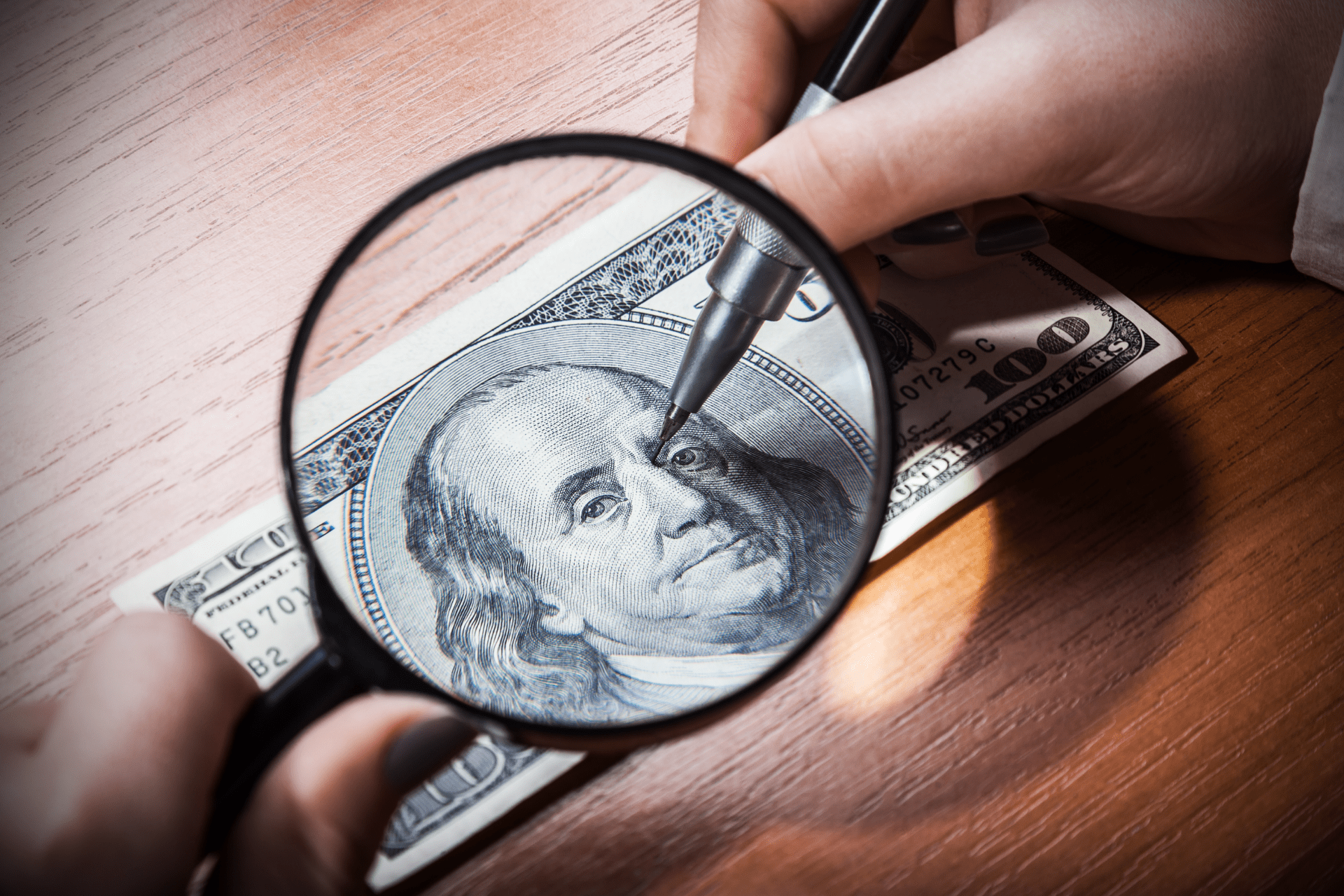Technological improvements and innovations have been one of the driving forces in art since at least the beginning of the 20th century. They have always facilitated radical new ideas and concepts, inspired the use of new tools and materials, and established new media that artists could use to express themselves.
The evolution of digital art in the last 30 years is the best example of how technology and art can go hand-in-hand. Artists have brought art to its very brink, often leaving us wondering whether their creations can even count as art or they simply represent a brand new form of human expression.
Blockchain technology and NFTs built on these blockchains are definitely among the game-changers. They’re affecting the way artists think and approach their art, but even more, NFTs enable new means of exhibiting, promoting, and trading art. Above all, NFT crypto art can revolutionize revenue models for artists and provide new ways for them to make a living. Let’s see how this all works.

What is NFT crypto art?
Troubles with “traditional” digital art
The job of a digital artist is constantly changing and getting new forms thanks to both technological improvements and the endless imagination of the artists themselves. However, what remains the same is the inability to properly protect their artwork and establish a long-term, stable revenue model.
Making money by making original artwork isn’t easy or straightforward, mainly because of the very nature of digital art. It can be easily saved or printed, so digital artists tried to find ways around this, such as protecting their work with watermarks or ruining the quality so you’d have to pay for the hi-res versions.
This worked for some, but it wasn’t a perfect solution. To this day, most digital artists live off their daily design jobs at different brands, while only the minority of them can make a living by selling their original creations on a free market. And this is exactly where NFTs come into play by providing a way to define and protect the ownership of the digital artwork, prove its scarcity, and at the end of the day, make money.
NFT crypto art
A bit unexpectedly, the solution has emerged from the world of cryptocurrency. The solution, however, wasn’t the cryptocurrency itself, but a relatively new, special type of asset built on a blockchain – NFTs.
Just like cryptocurrency though, NFTs can be transferred from one crypto wallet to another, and every transaction of this kind will be recorded on a blockchain. But NFTs have some special functionalities that make them fundamentally different from one another. Unlike cryptocurrency such as BTC or ETH where every “coin” of a particular currency is identical to others and hence fungible, every NFT is a separate, unique, and non-fungible token (NFT for short).
In essence, NFTs represent lines of code that describe a certain asset on a blockchain as well as rules for ownership and transferability. But what makes them particularly convenient for digital art is the capability to connect an NFT to a piece of art by simply inserting a link to it into the code. Moreover, NFTs allow for a bunch of metadata to be added as well – this metadata is able to provide a detailed description for any piece of art.
You may have noticed that an NFT is not art itself, it’s a digital token representing particular artwork. It’s like a confirmation you get from the artist or the auction house that simply proves your ownership over a piece of art that can be found at a specific link. In a way, an NFT is simply a tool that facilitates art trade thanks to the consensus of everyone on the network about its origin, ownership, scarcity, and other attributes.

How to make money on NFT crypto art?
Artists
As for digital artists, it seems that they have finally found a way to demonstrate the uniqueness of their pieces and make them financially valuable even though they’re still easily downloadable from the web. We know what you might be thinking – why would I pay for an NFT of a digital file when I can use my right-click and save it to my device for free?
And the answer is – for the same reasons you’d rather own an original painting than a print. And for the same reason the original Van Gogh is worth millions, while a print at the museum gift shop is worth $20. The scarcity of the artwork (meaning there’s only 1 NFT that represents a particular piece of art) and the proof of ownership of original work is what keeps the NFT economy moving.
Artists have already started making a profit off of NFT crypto art and it seems like this trend has only begun. At the most basic level, artists can simply mint their art into NFTs and sell it on NFT marketplaces. However, we’re still just discovering different ways artists can promote themselves and earn money with the help of NFTs and the possibilities seem to be huge.
Traders
Obviously, what can be sold can be resold as well. Just like “regular” art traders, NFT traders use advanced methods and strategies to pick the right NFTs and either flip them for profit quickly, or keep them long-term, anticipating that their value will increase over time.
The NFT market has been constantly growing since the beginning of 2021 and a lot of traders are trying to use this to their advantage. NFT trading lies basically at the intersection of crypto trading and art trading, so you need a bit of knowledge from both worlds in order to be truly successful in it. This makes for a very active, vibrant community of NFT traders that are shaping the future of this market together with the artists and developers.
Gamers
Finally, NFT crypto art can bring financial benefits to gamers as well. More precisely, to crypto gamers playing earn-to-play NFT games. Namely, NFTs can be used for various in-game items, such as weapons, armor, vehicles, clothing, pieces of land, and even avatars.
You can buy NFTs from the game studio or other players, improve them in-game and then sell them for more money. Or you can just keep these NFTs in your wallet, wait for the game to become more popular and for the prices of these NFTs to increase, and then sell. The best thing about NFTs is that they’re transferable between different games and actually owned by the player, not the development studio.
If you still haven’t checked out any NFT crypto games and you’re still wondering how they work, our newest game Solchicks may be the right place to start!

How to mint and sell an NFT
Now, the crucial question, especially for digital artists is how and where to sell their NFTs. This is actually quite a simple and intuitive process and you don’t need to be any sort of IT professional or a crypto expert to handle it. Just follow these few steps:
1. Download a crypto wallet where you’ll keep your crypto funds.
2. Buy some cryptocurrency from a cryptocurrency exchange platform and transfer it to your wallet.
3. Register to one of the many NFT online marketplaces, where you can sell, buy, and often even create (“mint”) the NFTs
4. Connect your wallet to a marketplace of your choice. Have in mind that not all wallets are compatible with all marketplaces, so you’ll have to check that beforehand. Otherwise, you’ll have to get another wallet or go to another marketplace.
5. Now we come to the minting part. Most marketplaces offer this functionality – just find a button that reads something like “create new item” or “mint now” or something along those lines. Then you upload the file you want to turn into an NFT and add some useful info about it.
6. Before the minting starts, you’ll have to pay the “gas fees” that can be wildly different at different times and in different marketplaces. The cost of these fees will be clearly stated on your screen before you initiate minting.
7. Gas fees will be charged from your crypto wallet, and now you’re all set. When the NFT is created, you can list it for sale. Choose between auctioning it or selling it for a fixed price, determine how much it will cost, and wait for your first offer.
NOTE: Most marketplaces will also charge some additional transaction fees or some kind of commission. These can differ substantially, so always first make sure they’re reasonable and transparent.
Ownership of NFTs
What does “ownership” mean for NFTs?
Now let’s deal with some more delicate characteristics of NFTs, especially the ones that are key to NFT crypto art. The whole concept of NFTs is still quite exotic to most people and there’s a lot of confusion about how the issues of ownership and copyright are resolved in the world of NFTs.
As we’ve mentioned, NFT is not art itself, it’s just proof of ownership over a digital file. Their legal status, however, remains still unclear as there are no precise international regulations that would settle this question. What we know for sure is that they’re validly created and traded on a blockchain and that they are fully legit inside the borders of the crypto world, which is more than enough to give NFTs economic value.
Copyright protection
However, this does bring us to another problematic point – copyright issues. The main question obviously being – do you acquire the legal rights to a piece of art when you buy an NFT?
The short answer is: no. In principle, NFTs are just lines of code that define ownership. So having “commercial rights” on an NFT would be absurd, like having the rights to sell or produce a real estate purchase agreement. You want rights on the piece of art represented by the NFT, and legally, you don’t get that with the NFT itself.
Of course, you can make a different kind of agreement with the artist that would include their full legal authorization and transfer of the commercial rights to the buyer. But this is something that still has to happen “off-chain” and isn’t normally included when buying an NFT.
So does this mean there will be no repercussions for artists who decide to mint an NFT on one blockchain and sell it one marketplace, and then do the same thing over and over again on different blockchains and marketplaces? Legally, they can do that, but in practice, this rarely happens.
Most credible NFT marketplaces would have these artists or studios banned and this would also seriously undermine the artist’s reputation. And reputation is everything in the world of NFTs, powered by very influential and dynamic interconnected communities built around artists and projects.

Fighting the forgeries
Another problem that worries both artists and traders is forgery. One of the pillars of the crypto world is anonymity, combined with complete decentralization of control and governance. This does ensure more political and financial freedom for the users but also opens a lot of room for all kinds of fraud.
Of course, when you buy an NFT, you want to make sure that you’re paying the artist who actually created the piece, not a random person who downloaded the artwork and then minted it on a marketplace. Although it’s not always possible to stop scammers from doing this, most marketplaces have some protective procedures in place.
Some marketplaces use detailed verification processes for artists, while others have developed their own tools and algorithms that are capable to recognize a work of art that has already been uploaded to another marketplace or elsewhere on the web. Note that it’s much easier for a well-known artist who has already built a large community to notice and report fraudulent activities on different platforms.
All this is still no guarantee you won’t be cheated though. That’s why verification processes are getting more and more rigorous, and hopefully, all marketplaces will eventually adopt strict authentication protocols and start using advanced tools for recognizing forgeries.
FAQ – NFT Crypto Art
How to sell NFT crypto art?
First, you need to register to an NFT marketplace. Then you’ll connect your crypto wallet to it, upload the file you want to turn into an NFT, and let the marketplace mint it for you. After that, you can list it and sell it on their website. Also, bear in mind that there are multiple fees you’ll have to pay in this process.
How to create NFT art?
Basically just like any digital art, but with a small extra step. Any art can be NFT art once it’s processed by a blockchain and then hosted on it. Just go to an NFT marketplace of your choice, pick a digital item you want to convert to an NFT and their software will do the rest.
How to display NFT art?
Once you’ve minted your NFTs, you’ll normally display them at places where you can instantly sell them – NFT marketplaces. Of course, exhibiting your NFTs on your social media as well won’t hurt your chances to get noticed. There are also many specialized websites and NFT online communities that can help you gain some exposure.
What does NFT stand for in art?
The expression “NFT” stands for “non-fungible token”. It’s a non-convertible crypto asset that has some specific properties in comparison to cryptocurrencies. All NFTs are unique, different, and can be easily connected to a particular piece of digital art. This is exactly what makes them so suitable as proof of ownership of a digital item, especially when it comes to owning artwork.


